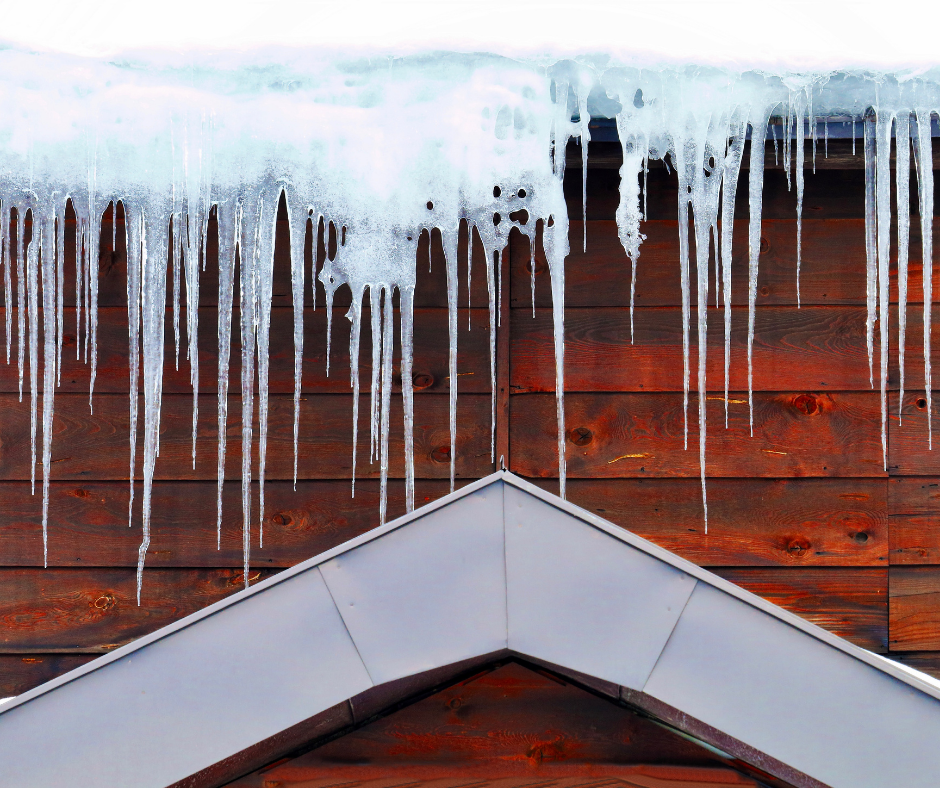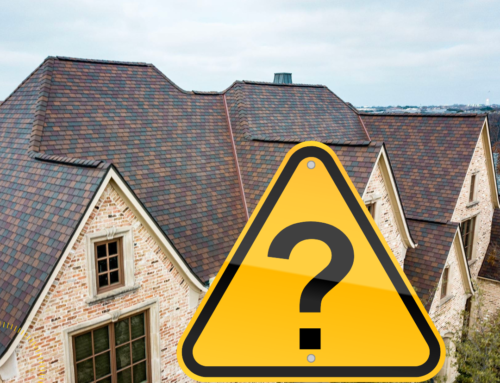Winter has arrived and with it, the possibility of Ice dams and icicles. They form when snow melts, runs down your roof, and refreezes near the edge. However, this will only occur when part of your roof warms to above 32 degrees F, warm enough to melt the snow, while the roof edge remains below freezing. This scenario is often the result of a warm attic.
Consistent roof temperature is the key to preventing ice dams. Heat can escape through your ceiling and enter the attic. Then, it warms the wood and shingles directly above it. Although the outdoor temperature is below freezing, the snow melts over the warmed section of roof. When the meltwater runs down the roof, it hits the cold edge not warmed by the attic. There it freezes, creating a rim of ice. This rim can grow, trap more water behind it, and create a full-fledged ice dam.
Ice dam removal is a pain, so try to prevent them from forming in the first place. The key to preventing ice dams is simply to keep your attic and roof cold. After a snowfall, a cold roof will have a thick blanket of snow. A warmer roof, however, will soon have clear spots where the snow has melted off, and may well have icicles hanging from the eaves. To keep your roof cold, follow these three steps:
- Close up Attic Bypasses
In the average home, about one-third of the heat loss is through the ceiling into the attic. Most of that loss comes from air leaks caused by unblocked walls, gaps in drywall, and cracks around light fixtures, plumbing pipes, chimneys, access hatches and other ceiling penetrations.
The attic should be checked for air leaks by pulling or raking back insulation The leaks should then be plugged using foam, caulk, and other methods. Low roof angles make some air leaks difficult to reach. This work is definitely a cool weather project.
- Measure Your Attic Insulation Level
Have the depth of your attic insulation level checked. Upgrade attic insulation to an R-value of about R-40. Building codes require about 12 to 14 inches of fiberglass or cellulose. More should be added when less than eight inches is measured and there have been ice dam problems in the past.
Blown-in cellulose and fiberglass are usually better than hand-placed batts, because they fill more tightly around rafters, joists and other obstructions, leaving fewer gaps. It’s usually worth hiring a professional for this job. Thisoldhouse.com recommends you Read This Before You Insulate Your Attic.
- Add Roof and Soffit Vents
Attic ventilation draws in cold outdoor air and flushes out warmer attic air, cooling the attic and the roof in the process. The minimum ventilation area, or size of the ventilation opening, should be about one square foot of vent per 300 square feet of ceiling area, which is also attic floor area, when half the vent area is low on the roof and half is high.
Most of us will benefit from an expert figuring out if your attic has enough ventilation. The process of figuring this out can get complicated quickly. For example, on a pyramid shaped roof, common square shaped roof vents may need to be added near the peak.
Some roof types are difficult to vent, especially roofs with angled ceilings and no attic, roofs with skylights, flat roof dormers and low-slope roofs. Bobvilla.com offers All You Need to Know About Attic Ventilation.
Dynasty Restoration has experts available to help you live an ice dam free winter! Contact us for a free estimate today!





